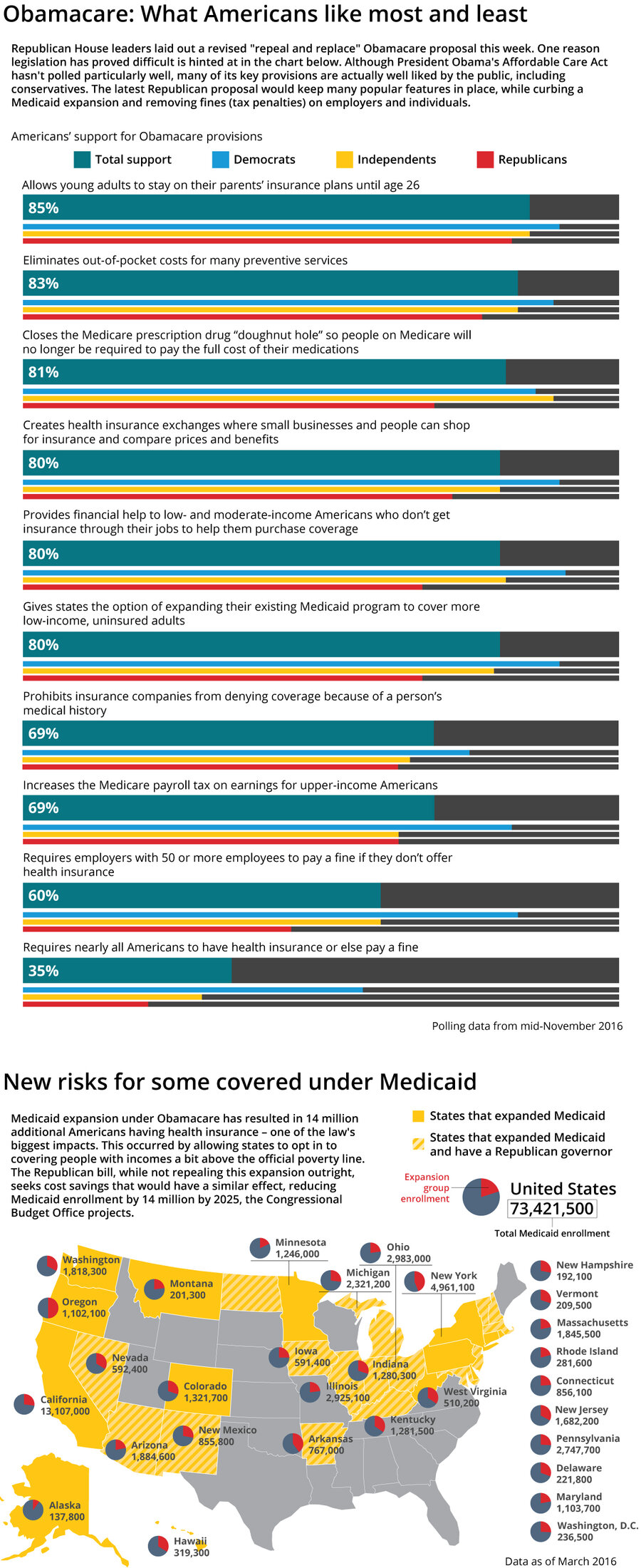Behind North Korea’s thinking on nukes
The Trump administration has portrayed the US missile strike on a Syrian air field earlier this month as a sign its willingness to make tough decisions.
In other words, North Korea better watch out.
But to North Korean leaders, analysts say, the attack reaffirmed a different lesson: the importance of having a credible nuclear deterrent.
“The logic is pretty simple,” says Wenran Jiang, an associate professor of political science at the University of Alberta, in Canada. “The North Koreans see what happened in Syria and say, ‘If we give up nuclear weapons, that’s what will happen to us.’”
As a small, impoverished nation focused on its own survival, North Korea is deeply committed to holding on to its nuclear arms. To shut its program down would be to risk the regime's annihilation, but to keep it going runs the risk of triggering a devastating war that could lead to millions of casualties.
But ultimately, nuclear weapons are also a means, not just an end: the government hopes a powerful-enough nuclear deterrent will provide the security it needs to pursue economic reforms without the threat of outside interference – a trajectory not so different from China's.
So goes the strategic calculus at the center of Pyongyang’s nuclear ambitions – a paradox that leaves Washington with no good options as tensions continue to rise.
'Storm clouds gathering'
Last week, Chinese Foreign Minister Wang Yi warned of “storm clouds gathering,” and criticized the United States, South Korea, and North Korea for dangerous “tit for tat” engagement, according to the Chinese state news agency Xinhua. Observers say North Korea could conduct its sixth nuclear test any day. Meanwhile, a US carrier group is on its way to waters off the coast of the Korean Peninsula.
North Korea’s expanded arsenal was on full display Saturday at an annual military parade in Pyongyang, commemorating the birthday of founder Kim Il-sung. It included intercontinental ballistic missiles that could one day be capable of reaching the US mainland, and solid-fuel missiles that could be fired from land and submarines.
On Sunday, North Korea launched a ballistic missile that exploded seconds after liftoff, a high-profile failure that occurred hours before US Vice President Mike Pence arrived in South Korea.
Still, the weekend's displays of strength served as reminders of Washington’s long history of unsuccessful attempts at negotiations with Pyongyang that stretch back more than two decades. North Korea launched a long-range rocket and conducted two nuclear tests last year, including its most powerful to date.
North Korean resolve
Vice President Pence warned of an "overwhelming and effective American response" to any provocation from the North. But North Korea appears unwilling to back down. It has remained in a state of near-war since the fall of the Soviet Union, when the country lost its largest defender and became vulnerable to the US and its allies. Communist regimes around the world were crumbling, but North Korea dug itself in.
In the spirit of “juche,” Kim Il-sung's philosophy of “self-reliance” that has become a kind of state-sanctioned ideology, the country established its military-first policy that continues to today. It maintained that footing even through widespread famine in the 1990s that killed hundreds of thousands. Pyongyang justifies huge investments in nuclear weapons by perpetuating a narrative of imminent threat from foreign forces.
But John Delury, an associate professor of Chinese studies at Yonsei University in Seoul, says that establishing a nuclear deterrent is only part of supreme leader Kim Jong-un’s vision for his country.
Mr. Kim’s ultimate goal to ensure that North Koreans will never again have to “tighten their belts,” says Professor Delury, a promise he made as soon as he took power in 2012. Nuclear deterrence provides the young leader the security he needs to more fully focus on economic development.
Kim has already carried out a series of economic reforms, including an overhaul of the agriculture sector that has led to record-level harvests and the opening of new special economic zones. In a speech last year, Kim said future economic development would focus on the mechanization of agriculture, automation of factories, and increased coal production.
“I would not say the economy is booming, but it has seen steady growth under Kim,” says Andrei Lankov, a history professor at Kookmin University in Seoul who studied at a North Korean university. “He has no illusions about the command economy. He knows the only game in town is what China did 30 years ago through market reforms.”
The China Model
Few nations understand North Korea’s logic better than China, which followed a similar path in the second half of the 20th century. Delury says that China's development of a nuclear weapon in the 1960s gave it a strong sense of external security, and helped spur the Chinese Communist Party to turn its attention to liberalizing the economy in the late 1970s.
With their shared history in mind, it comes as little surprise that China has been so reluctant to put more economic pressure on North Korea – and not only because it doesn’t want to push the regime to the point of collapse, a worst-case scenario for Beijing.
“The bottom line is the Chinese don’t think pressure is going to work,” Delury says. “They well understand that this is a stubborn, prideful, independent neighbor, but that twisting their arm makes the problem worse.”
The North Korean regime has effectively forced the world into an elaborate game of chicken to ensure its survival. The more pressure the country faces – whether economically or militarily – the more it’s pushed to develop new asymmetrical threats and accept even higher levels of risk to intimidate its rivals. Its goal is to make any potential war too costly to consider, which is why it’s so keen to develop a nuclear-tipped missile capable of hitting the continental US.
Not even China, the North’s main political ally and its economic lifeline, is immune to its provocations. The latest snub occurred last week, when Pyongyang didn’t respond to a meeting request from China’s top nuclear envoy, according to South Korea’s Yonhap news agency.
The diplomatic slight highlights ongoing questions about Beijing’s influence over the North Korean regime, as Trump pushes China to do more to rein in its erratic neighbor.
China has spoken out against the North’s weapons tests and has agreed to stiffer United Nations sanctions. In February, Beijing banned imports of North Korean coal, cutting off Pyongyang's most important export.
But as North Korea's dominant trade partner, China has also maintained robust economic ties with it. Data released last week showed that trade between the two countries grew 37.4 percent in the first three months of this year compared with the same period in 2016.
For its part, China argues that negotiations between Pyongyang and Washington are the only way to resolve the simmering crisis and avoid a conflict on its border. Such talks could require the US to make significant concessions it has so far been unwilling to accept.
“The Chinese look at North Korea and think, ‘We’ve been there before,’” Professor Jiang says, referring to China's own path over the last half-century. “At the end of the day, they may decide its behavior isn’t as out of hand as people in the West suggest.”
















